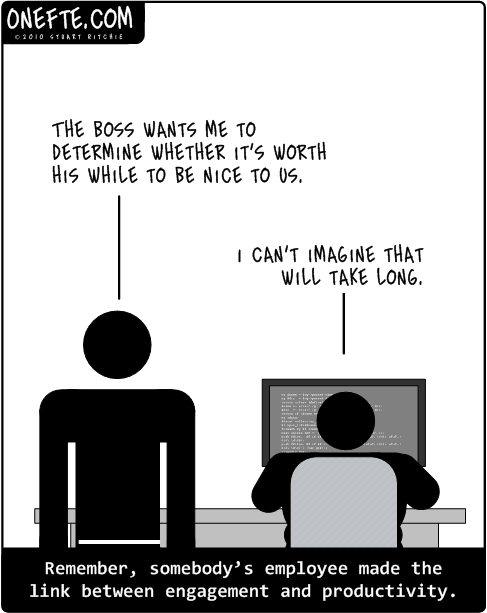With some big name companies like BHP Billiton and Leighton Contractors being singled out in the media recently for their overly prescriptive practices relating to micro-management, we thought we’d share a more positive approach to leading people.
Today’s HRwisdom Blog post comes from Carlo Pandian – a keen observer all things related organisational behaviour, leadership and human resources.
Over to Carlo . . .
Leading without Saying a Word – Why Non-Verbal Cues are Important
A leader doesn’t always have to use words to communicate meaning. In fact, more of what he or she really means comes across in gestures, facial expressions and other non-verbal cues than any of the words that they could say. Research has suggested that between 60 and 70 percent of all communication between humans is derived from non-verbal cues. We pick up on every smile, every sigh, every eyebrow raise, every glance at the watch, whether we want to or not.
Sometimes your non-verbal communication can even betray what your words are saying. You can be trying to be polite in your speech, but your words will give away your distrust, disregard or distraction. As a leader, you must be careful not only with what you say but with how your body language comes across.
Don’t Forget to Smile
Are you one of those bosses who walks around all day with a frown on? Perhaps you are deep in concentration over a specific problem that you are trying to solve, or perhaps you just haven’t had your coffee yet. Either way, having an unsmiling expression on your face can actually have a detrimental impact on your business.
 Why? Because you are giving out non-verbal signals to your employees telling them not to approach you! Your lack of a smile makes people assume that you are in a bad mood or that you would react badly if they were to bring you their problems, feedback or ideas.
Why? Because you are giving out non-verbal signals to your employees telling them not to approach you! Your lack of a smile makes people assume that you are in a bad mood or that you would react badly if they were to bring you their problems, feedback or ideas.
This is a bad thing, because you want and desperately need your employees to find you approachable. Their ideas and suggestions can be incredibly valuable for you as they will help you to realise how the company can improve. Practice giving your employees a friendly nod and a smile whenever you see them and keeping your facial expression positive so that they will feel comfortable when approaching you.
Be Aware of Your Meeting Habits
It can be incredibly boring to sit in meetings for hours, but if you are not careful your body language will be telling everyone just how bored you actually are. This can be insulting to prospective clients, discouraging to employees and can make you look unprofessional.
Ask yourself if you have a habit of slumping in your seat during meetings and conferences, or staring out the window. Do you take out your phone and fiddle with it, or work on other documents? Do you tap your feet, jiggle your leg or play with your hair? Become more aware of all of these habits, because whether you want to or not you are sending everyone else in the meeting the message that you don’t want to be there.
Instead, turn of all distractions and face forward with your feet on the floor. Make eye contact with the person who is speaking and make sure that you are actively listening. Not only will you get a lot more out of the meeting, people will know that you care what they have to say.
Acknowledge People on a Personal Level
Employee recognition is somewhat about the words that you say, but it is also about the non-verbal cues that you give to your staff every day. People want to be acknowledged, encouraged and appreciated. You can do this by giving them positive feedback on the things that they do right, but also make sure that your non-verbal communication with them is positive.
One thing that you can do is to greet every member of staff, from the vice president to the cleaning staff, with a friendly smile, a nod and maybe a little wave (whatever suits your style) whenever you see them. When you walk through the office, make eye contact with people and give them a look that shows them that you are happy to see them and that they are doing well. You’ll be amazed by how much you can convey with these encouraging looks.
Leaders need not only pay attention to their words, but also instead to the fact that they can convey so much more without saying a thing.
About Carlo
Carlo Pandian is a management graduate at the University of London specialised in organisational behaviour, leadership and human resources. He writes tutorials on Intuit Payroll software and is interested in how employees collaborate and interact in corporations to pursue organisational goals and ensure growth.
[twitter url=”http://wp.me/p2NLLP-198″ source=”@HRwisdom” text=”Great article (and funny cartoon) on leading people without saying a word.”] [fbshare type=”button”] [linkedin_share style=”none”] [google_plusone size=”standard”]


